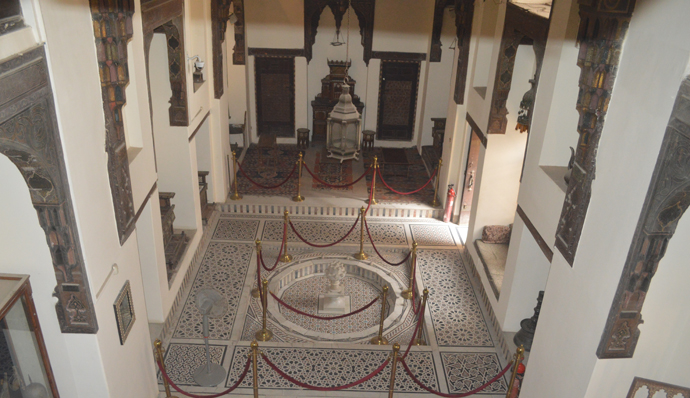By Amira Elhamy
Photo credit: Ahmed Saber
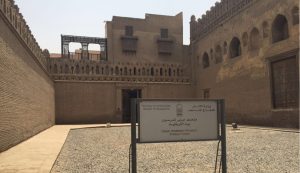 Have you ever thought to travel through time to discover how people used to live in ancient times? Have you ever said to yourself : “I wish I lived in the past”! Well if you would like to take a journey through time and live a couple of inspiring moments in the past, we advice you to read this piece, which will take you to a journey through history by reading about one the most beautiful ancient houses in Egypt; a house that illustrates the beauty of the Ottoman architect. The house we are talking about is El Keretleya house, located in Sayeda Zeinab neighborhood , next to the Ahmed Ibn Touloun mosque.
Have you ever thought to travel through time to discover how people used to live in ancient times? Have you ever said to yourself : “I wish I lived in the past”! Well if you would like to take a journey through time and live a couple of inspiring moments in the past, we advice you to read this piece, which will take you to a journey through history by reading about one the most beautiful ancient houses in Egypt; a house that illustrates the beauty of the Ottoman architect. The house we are talking about is El Keretleya house, located in Sayeda Zeinab neighborhood , next to the Ahmed Ibn Touloun mosque.
The house we are about to discover, has another name, which is Gayer Anderson Musem; Gayer Anderson was a British doctor who lived in “Beit El Keretkeya” from 1935 to 1942. Originally the house was built as two separate houses. The larger house, located to the east was built in 1632 by Hajj Mohammad ibn al-Hajj Salem ibn Galman al-Gazzar . It later came into the possession of a wealthy Muslim woman from Crete and the home became popularly known as Beit al-Kritliyya, or «House of the Cretan Woman “.The second house, to the west (the innermost side in relation to the mosque) was built in 1540 by Abdel-Qader al-Haddad. It later became known as «Beit Amna bint Salim, after its last owner. The two houses were joined by a bridge at the third floor level and are both collectively known as Bayt al-Kritliyya. The two houses were built using the outer wall of the Mosque of Ibn Tulun as support.
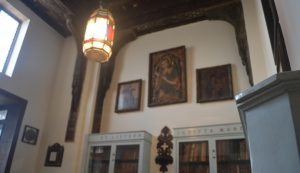 Gayer Anderson the British doctor, was fond of Antiques collecting; according to Hisham Naguib, the manager of the Museum, the house did not have much of its furniture when Anderson lived in it in 1935. “Being in love with collecting antiques and furniture, Anderson collected various antiques from all over the world; he actually decided to divide the rooms of the house according to themes,” Said Hisham.
Gayer Anderson the British doctor, was fond of Antiques collecting; according to Hisham Naguib, the manager of the Museum, the house did not have much of its furniture when Anderson lived in it in 1935. “Being in love with collecting antiques and furniture, Anderson collected various antiques from all over the world; he actually decided to divide the rooms of the house according to themes,” Said Hisham.
The architecture design the house reflects the typical Ottoman style, it is divided into two half, the Haramlik, or the family residence, and the Salamlik, also known as the guest-house, and this reflect the typical Ottoman design which is based on making separate rooms for men and women, in order to guarantee the maximum comfort for the family living in the house.
Hisham Naguib says that the Ottoman Islamic architect is one of the best architectural style that aims for the well being and comfort of inhabi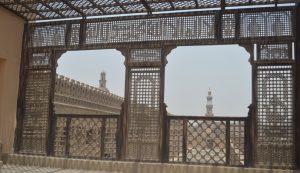 tants. This is strongly manifested in all the entrances of Keretleya house, which have high curved ceilings that guarantee strong air flow. Several fountains are also found in the house to cool the temperature of the house in summer time.
tants. This is strongly manifested in all the entrances of Keretleya house, which have high curved ceilings that guarantee strong air flow. Several fountains are also found in the house to cool the temperature of the house in summer time.
“ It is one of the very few old houses, which has a water well; it has actually two water wells”, says Hisham.
The room which has the well is a big room; it was used as a “Sabil”; the concept of having a “Sabil” was a rooted concept within in the old Egyptian Muslim culture; the idea is based upon giving water away to street passengers, as a act of philanthropy. The well is extremely deep; around it there are two big water containers. The room has huge windows, through which the “Mezamelati”, the man responsible for giving the water away, used to give water to street passengers.
As for room divisions in Keretleya house, they are divided according to themes. Anderson being, a retired collector, decided to make each room a distinctive piece of art. The house has a Chinese room, which has all furniture gracefully selected from China, Damascus room, which is the most beautiful room in the whole house; the whole room is made of wood, demonstrating great beauty and charm. The ceiling is decorated with a poem, which is praising the Prophet. There is also, Mohamed Ali room or the Turkish room, the Persian room and Byzantine room. The house has also a roof which has beautiful arabesque windows, (Mashrabeya), decorated with calligraphy.
Several tales have been associated with Keretleya house, one of which is that the house was built on the remnants of an ancient mountain called Gebel Yashkur, the “Hill of Thanksgiving.” It is believed that this is where Noah’s Ark came to rest after the Deluge described in both the Bible and Qur’an.
It is to be noted that several films and soap operas were shooted in Beit El Keretleya; “El Tout wel Nabout”(story written by Naguib Mahfouz), Saad El Yateem, and El Emam El Gazaly and many others.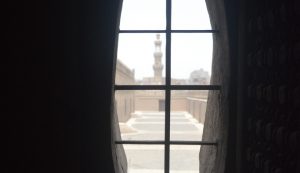
The house is currently under, the supervision of Ministry of State for Antiquities; many cultural activities are held in Keretleya house, especially during Ramadan; one of the most popular cultural shows that was held in the house garden is “El Leyla El Kabera”, which is a famous puppet show. It is crucial to maintain and revive such valuable heritage that Egypt enjoys.
#Stay tuned to more tours

